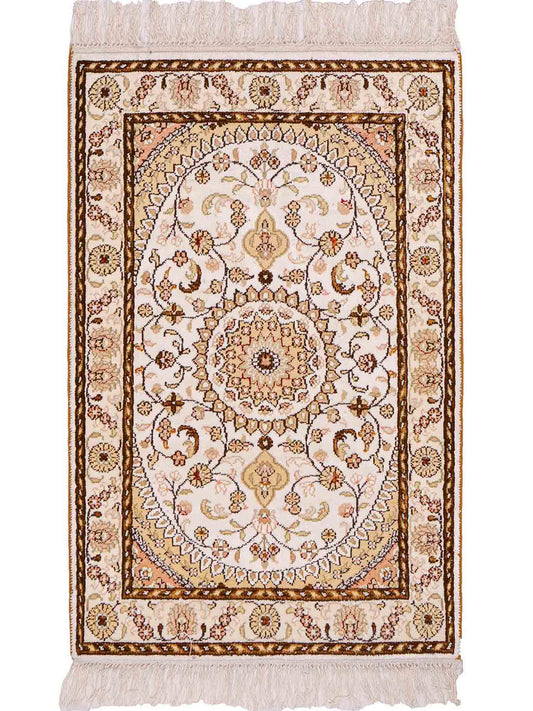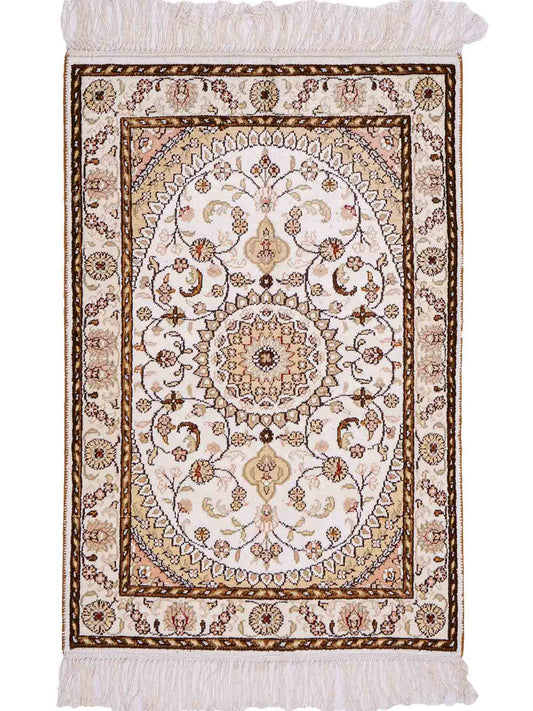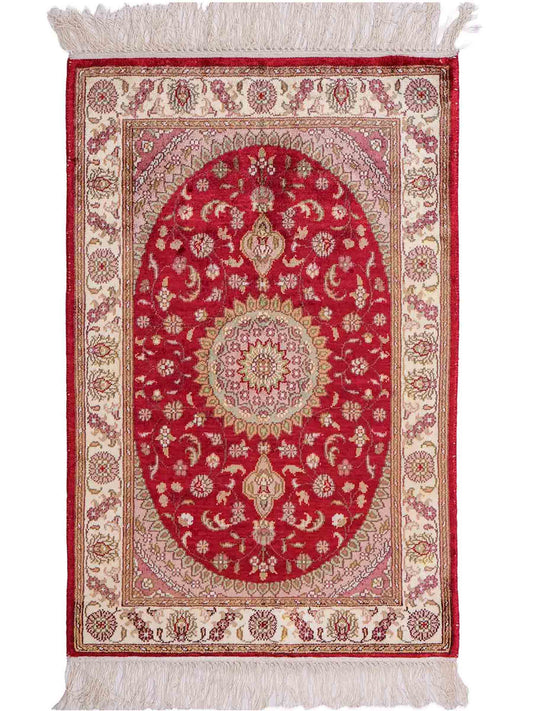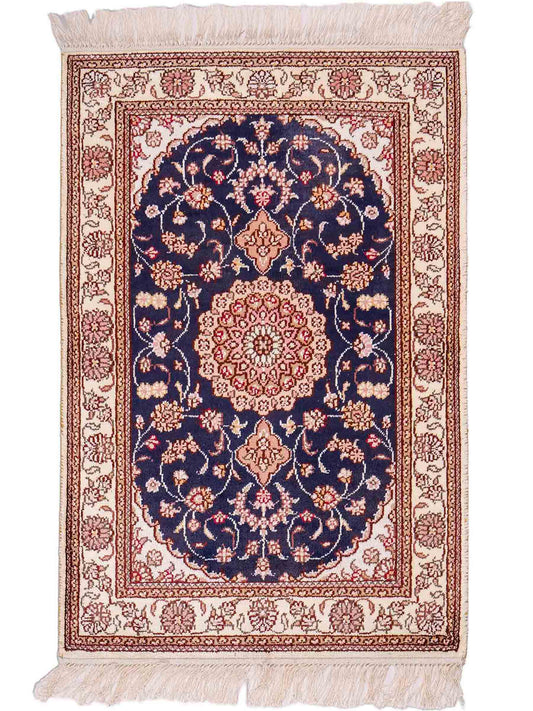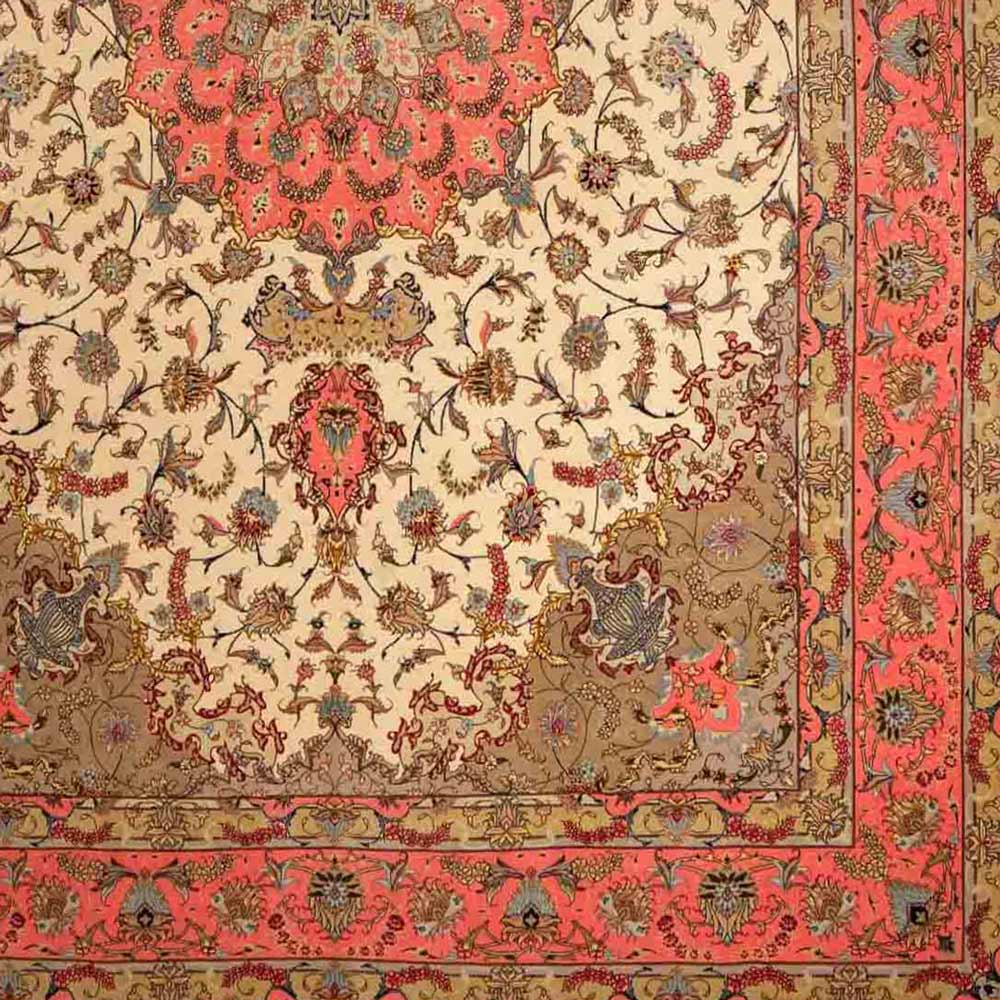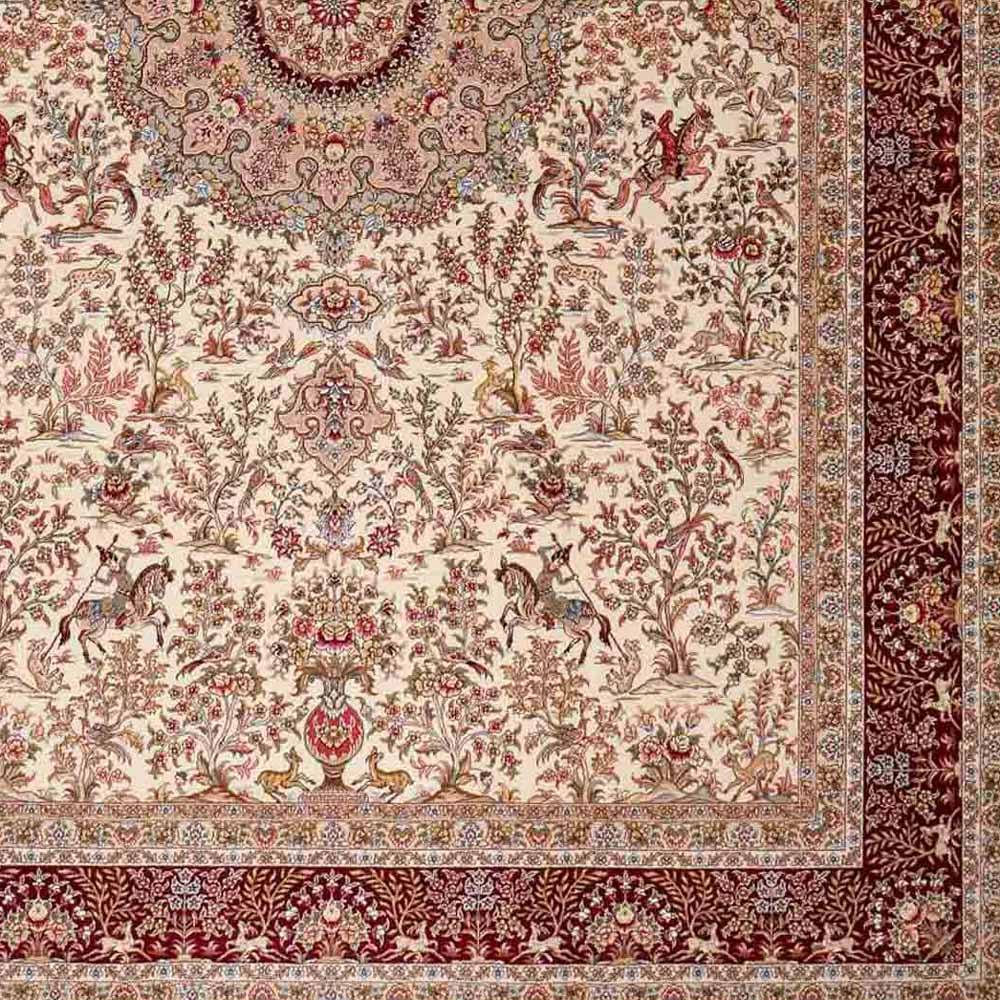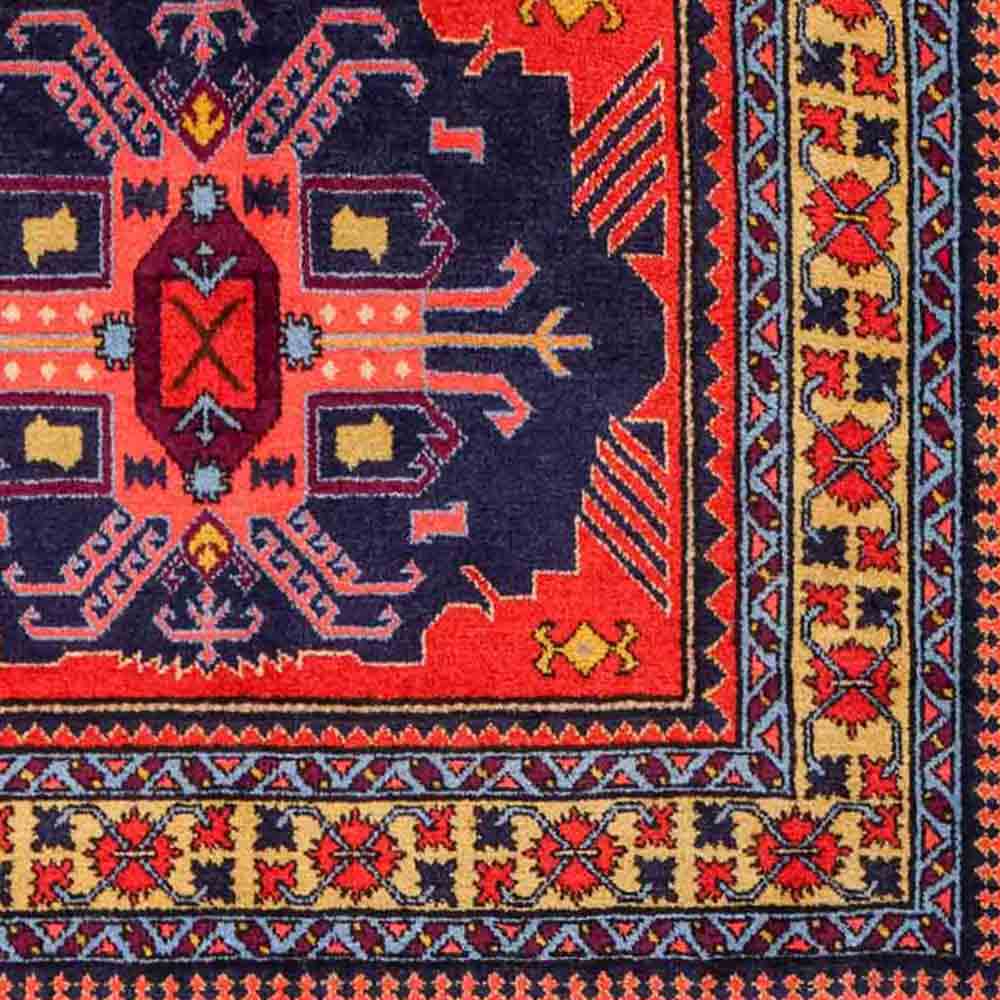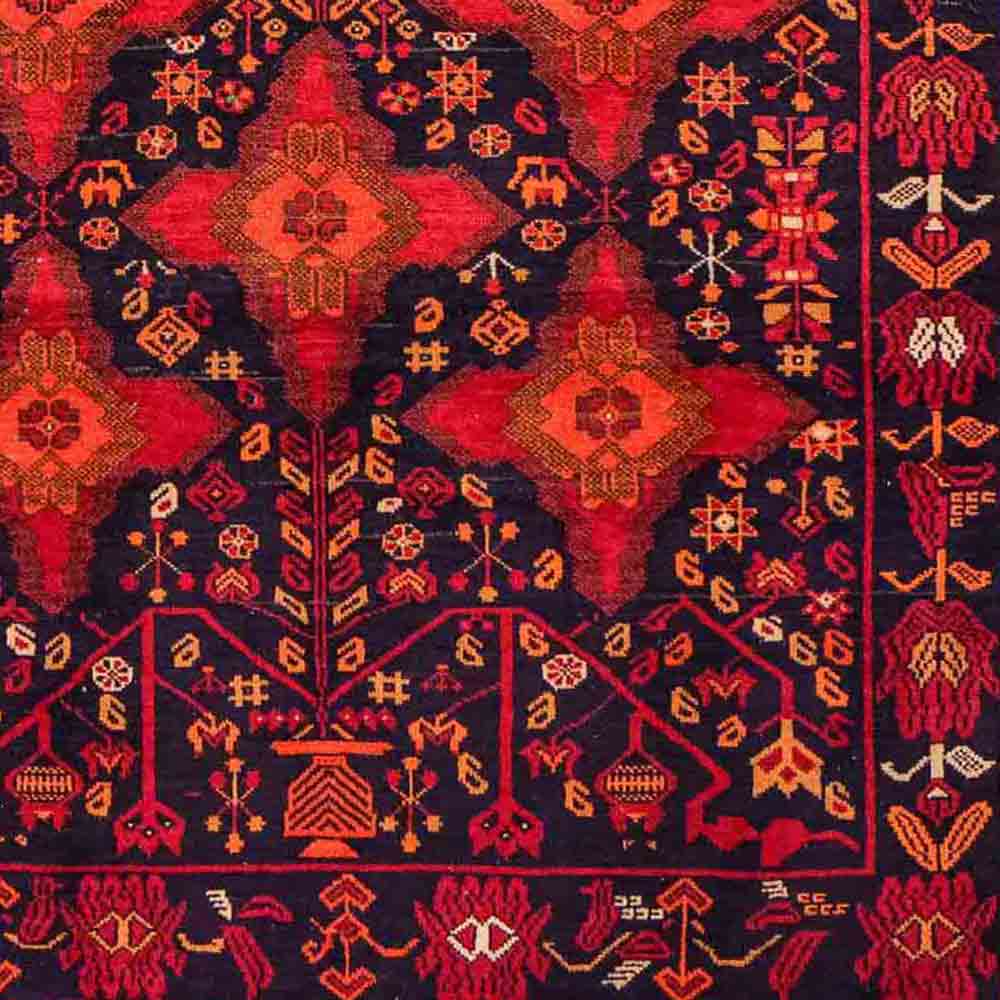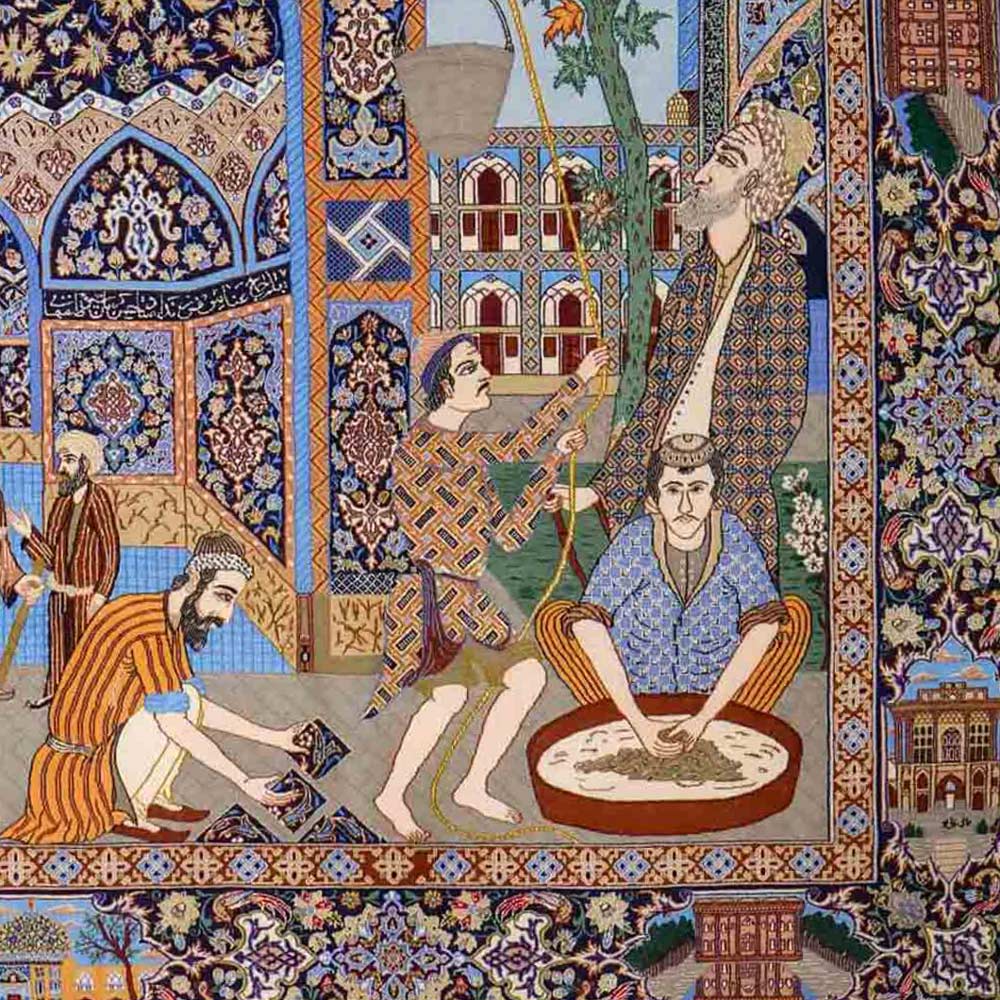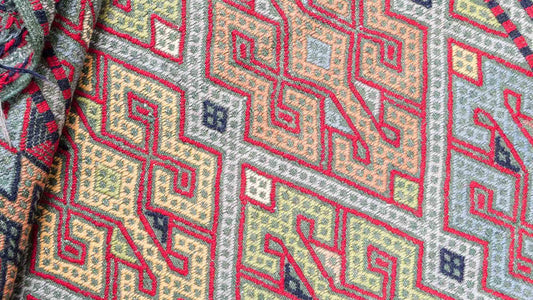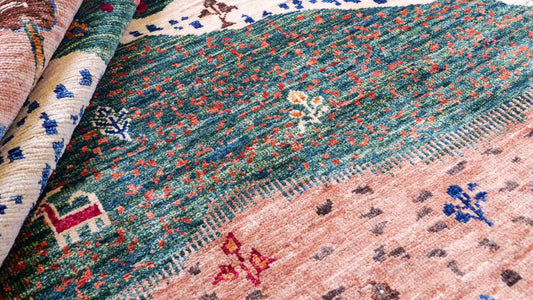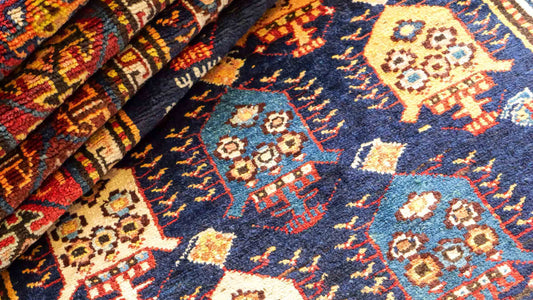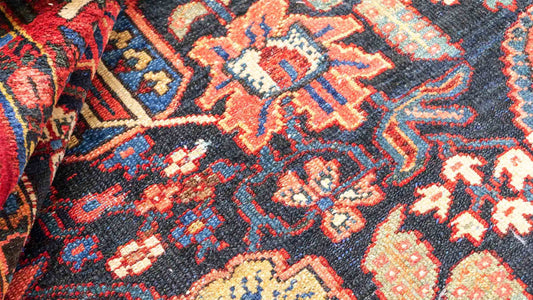
Nain
Daniel KhademiNain carpets have established themselves over time as true symbols of beauty and good style. Did you know that these exquisite carpets are often considered a timeless investment, with their value steadily increasing over the years? In this article, we invite you to explore the diverse facets of these outstanding carpets. We will delve into their geography and history and illuminate their cultural significance. Additionally, we will take a closer look at the complex manufacturing process, the characteristic designs, and the distinctive color palette that make Nain carpets so special and valuable.
Geography: A High-Altitude City in the Desert of Central Iran
Nain is located in the Isfahan province of central Iran and is characterized by its desert setting, which gives the region a unique landscape. The city is situated at an elevation of about 1,500 meters above sea level and is surrounded by the impressive Zagros Mountains. This mountain range not only provides a breathtaking backdrop but also influences the local microclimate of the area.
Nain experiences a continental, dry climate marked by hot summers and cold winters. These climatic conditions are ideal for sheep breeding, whose wool is a crucial foundation for carpet production. Historically, the region offered numerous pastures that allowed the sheep herds to thrive, contributing to the popularity of Highland sheep breeding. The high quality of the wool produced from these sheep is a fundamental pillar of the famous Nain carpets.
Another important element of the region is the underground water sources known as Qanats. These centuries-old water channels play a central role in agriculture and the carpet industry. They ensure consistent irrigation of the fields and enable the cultivation of plants that serve as fodder for the sheep. This sustainable use of natural resources is another aspect that makes Nain carpets so special.
Overall, the geographical conditions of Nain create an ideal environment for the development of a rich carpet tradition that has been preserved across generations and is now cherished worldwide.
History: Nain - How Rug Art Shapes Tradition and Culture
The history of carpet weaving art in Nain dates back to the Safavid dynasty (1501-1722), a period considered the golden age of Persian carpet art. During this era, the city of Nain experienced a remarkable cultural blossoming. The Safavids were not only patrons of the arts but also lords of trade and diplomacy. This flourishing economy and generous patronage allowed artisans in Nain to refine their designs and adapt to the changing tastes and stylistic influences of the time.
A characteristic feature of this period was the integration of floral patterns and complex geometric forms that reflected architectural styles and Islamic art. These elements are still found in many Nain carpets today, giving them their unique beauty.
With the advent of international trade relations in the 19th century, Nain carpets found their way into the hearts of collectors and enthusiasts around the world. Nain carpets were not only appreciated for their aesthetics but also for the quality standards maintained by the artisans. Since then, Nain carpets have been regarded as significant artworks that reflect not only the craftsmanship of the region but also embody Iran's rich cultural heritage. Nain carpets are not merely functional items; they are living witnesses of a deeply rooted tradition passed down through generations.
Importance: Symbol of Quality and Cultural Heritage
Nain carpets hold a special significance in Iran, encompassing both cultural and economic dimensions. They embody the rich heritage of the country and are deeply rooted in tradition, reflecting the values and tastes of the region. The carpet weavers of Nain enjoy great renown for their skill and ability to create intricate designs and artistic patterns. On an international level, Nain carpets have gained strong standing, and their outstanding quality has made them sought-after works of art.
In many countries, Nain carpets not only represent exquisite craftsmanship but are also regarded as valuable investments that provide stability in times of economic uncertainty. They are regularly featured at prestigious exhibitions such as TEPPICHART in Frankfurt and the ICOC (International Conference on Oriental Carpets), where they attract international collectors and enthusiasts.
Manufacturing: The Art of Carpet Weaving in Nain
The production of a Nain carpet is a time-intensive and highly specialized process that requires much skill and care. The raw wool mainly comes from cashmere and lamb breeds known for their fine and soft texture. Before processing, this wool undergoes stringent selection criteria to ensure that only the best quality is used for carpet production.
The first step in manufacturing is the careful washing of the wool, followed by dyeing, which employs natural dyes. This environmentally friendly method ensures vibrant colors that endure over time without fading. After dyeing, the wool is spun into yarn, ready for the complex knotting process.
The knotting technique used in Nain carpets is known as the Persian knot, or Senneh knot, recognized for its density and excellent quality. Nain carpets typically feature a high knot density, usually starting at around 200,000 knots per square meter and, in some cases, exceeding 1,000,000 knots per square meter. This impressive knot density not only contributes to the carpets' extraordinary durability and resilience but also enables artisans to create especially fine and detailed patterns.
The resulting texture is exquisite and provides the carpets with impressive aesthetics while also offering high functionality. Thus, Nain carpets are ideal for daily use as well as for decorative purposes in sophisticated interior design.
The entire knotting process can take several months, depending on the size of the carpet and the knot density. This laborious and demanding manufacturing process ensures that each Nain carpet is a unique work of art, reflecting the dedication and skill of the artisans. Each piece tells its own story and reflects the rich tradition of carpet weaving art in Nain.
The Classic Designs: Elegance and Tradition Combined
The designs of Nain carpets are often characterized by floral motifs, featuring stylized representations of flowers, trees, and other natural forms. These aesthetic elements not only reflect the natural beauty of their surroundings but are also deeply rooted in the tradition and symbolism of Islamic art. The influence of this art form is particularly evident in the use of curved lines, symmetrical arrangements, and fine details in the motifs.
- Floral Motifs: A hallmark of Nain carpets is the diverse floral motifs present in their designs. Stylized representations of flowers, trees, and vines frequently appear in the carpets, giving them an organic beauty. These motifs are often arranged in harmonious color combinations, radiating subtle elegance. Patterns such as rosettes, lotus flowers, and cascading shapes are commonly used, symbolizing vibrant, blooming landscapes.
- Geometric Patterns: In addition to floral elements, geometric designs are also widespread in Nain carpets. These patterns are often inspired by Islamic and Persian arts and feature symmetrical and repetitive forms that are both visually appealing and harmonious. These geometric elements complement the floral compositions and provide an exciting contrast within the overall design.
- Medallion Designs: Frequently, central medallions constitute the main feature of the carpets. They are often intricately designed and presented in a harmonious interplay of colors that elegantly complements the surrounding patterns. Surrounded by complex borders, they give the carpet a sense of structure and balance. The borders are often adorned with finely crafted patterns that emphasize the floral elements and visually enrich the composition of the carpet.
- Combination of Tradition and Modernity: In recent years, some carpet weavers have begun to combine traditional designs with modern elements, leading to an interesting evolution of typical Nain designs. These new blends are often more minimalist and help the carpets find a place in contemporary living spaces.
The Traditional Color Palette: An Expression of Timeless Beauty
The color scheme of Nain carpets is an essential component of their beauty and expressiveness. Each element is carefully chosen to create a harmonious connection between tradition and contemporary design. The most commonly used colors include:
- White and Cream: These colors dominate many Nain carpets, forming a light base that gives them a clean and fresh appearance. White and cream ensure that other colors appear particularly vibrant. They symbolize purity, light, and peace, contributing to a sense of spaciousness and brightness in a room.
- Blue and indigo: Numerous shades of blue are frequently found in Nain carpets, reminiscent of the sky or water. These colors exude a cool elegance and often have a calming effect on the viewer. Blue often symbolizes tranquility, harmony, and the infinite, giving the carpets a timeless appeal.
- Red and Burgundy: These bold reds express energy and passion. They add depth and dimension to the carpets and attract the eye. Red is a color often associated with warmth, strength, and vitality, and its presence in Nains brings vibrant dynamism to the design of the room.
- Green and Dove Blue: These soft, natural colors underscore the floral motifs and create a harmonious, soothing atmosphere. Green symbolizes growth, freshness, and nature, while dove blue adds a gentle and refined touch. This combination promotes a feeling of serenity and is particularly appealing in living spaces where a relaxed environment is desired.
- Beige and Gold: These subtle tones round off the color palette of the Nain carpets and give them a certain elegance. Beige represents neutrality and warmth, while gold symbolizes luxury and wealth. Together, they create a classic and noble effect, which adds an additional dimension to the carpets, making them a perfect complement to various interior styles.
In addition to these typical colors, many artisans in Nain also use shades of gray, terracotta, and gentle earth tones to enhance the complexity of the designs. The skilled combination of these colors, often achieved through natural dyeing techniques, ensures that the carpets appear both traditional and contemporary.
Overall, the thoughtful color palette of Nain carpets makes them a modern highlight that reflects the centuries-old tradition of Persian carpet art. Each color pattern tells its own story and gives the carpet a unique identity.
Interior Tips for Nain Rugs
Nain rugs are characterized by their delicate color palette and fine, intricate patterns, making them ideal for an elegant and romantic interior style. They harmonize exceptionally well with modern, minimalist, or Scandinavian designs, where their subtle beauty can shine without overwhelming the space. A Nain rug can be placed in a bright living room or bedroom to create a relaxing atmosphere while visually enriching the room.
When positioning a Nain rug, you should consider the proportions and base colors of your furniture. A large rug works well in open living areas, while smaller rugs often serve better as accent pieces in reading nooks or next to a bed. Be sure to incorporate the color tones of the rug into the rest of your interior decor, whether in cushions, curtains, or wall colors, to achieve a harmonious overall effect.
Why Is a Nain Rug a Good Investment?
A genuine Nain is an excellent choice for several reasons and can even be regarded as a valuable investment. Here are some of the main reasons:
- High-Quality Materials: Nain carpets are made from first-class wool and often feature silk accents. The use of these high-quality materials contributes to their durability and robustness, ensuring they remain in excellent condition even after many years.
- Exquisite Craftsmanship: The carpets are intricately handcrafted with a high knot density, often between 200,000 and over 1,000,000 knots per square meter. This attention to detail and the knotting techniques employed guarantee not only a beautiful appearance but also improve the resilience of the carpet.
- Aesthetic Diversity: Nain carpets offer a rich selection of designs, colors, and patterns, making them versatile and appealing for various interior styles. Whether traditional, modern, or a mix of both, a Nain can add a unique touch to any room design.
- Sustainability: The handmade production and the use of natural dyeing techniques ensure that Nain carpets are an environmentally friendly choice. Additionally, their lifespan is often intergenerational, making them a sustainable acquisition.
- Appreciation: Nain carpets frequently increase in value, particularly with the rising interest in traditional art forms. According to a recent study of the international art market, the value of top-quality Nain carpets rises by about 5-10% annually, making them a smart investment for collectors.
- Cultural Value: They represent the rich cultural heritage and tradition of carpet art in Iran. They are not only decorative elements but also carriers of stories and symbols of Persian culture, which further enhances their value.
- Versatile Use: A Nain fits both residential and commercial spaces, serving as both a functional piece of furniture and an artistic highlight of the room. Combining aesthetics and functionality, it is an excellent addition to any home or office.
- Collectors' Items: The uniqueness and elaborate craftsmanship make Nain carpets sought-after collector's items. Demand from collectors can increase their value, especially if the carpet remains in pristine condition.
The market for handmade carpets is steadily growing, as more people recognize the uniqueness and emotional value of craftsmanship. Nain carpets uniquely blend art, history, and functionality. They are not only an enrichment for any home but also a valuable piece that tells stories and can endure through generations. In a world increasingly shaped by mass production, individually crafted artworks are becoming more significant and valuable, with Nains often at the forefront of this movement.
You can find out more about this topic here.
Conclusion: Nain Carpets – A Legacy of Beauty and Value Stability
Overall, Nain carpets are a remarkable example of Persian carpet art. They embody exquisite manufacturing techniques and represent a piece of history and culture in every room. Their geographical roots, long history, exquisite craftsmanship, high knot density, elegant designs, and carefully chosen color palette make them coveted art objects. Furthermore, compared to other renowned knotting provinces like Ghom or Isfahan, Nains offer an excellent combination of stunning quality and affordability. By blending exceptional quality, artistic expression, and cultural significance, they have secured their place in the international market and are now equally desired by collectors and enthusiasts alike.
Explore our extensive range of Nain designs and find your new dream carpet!

